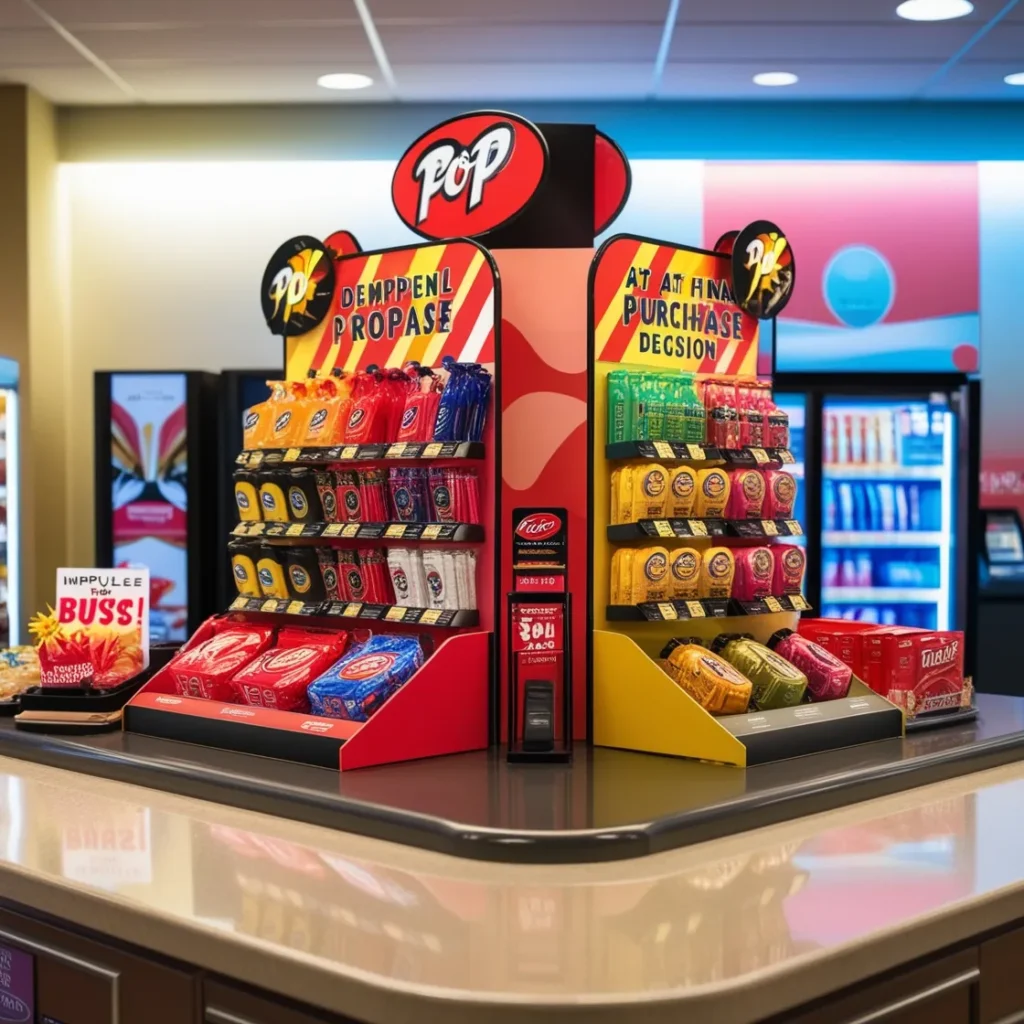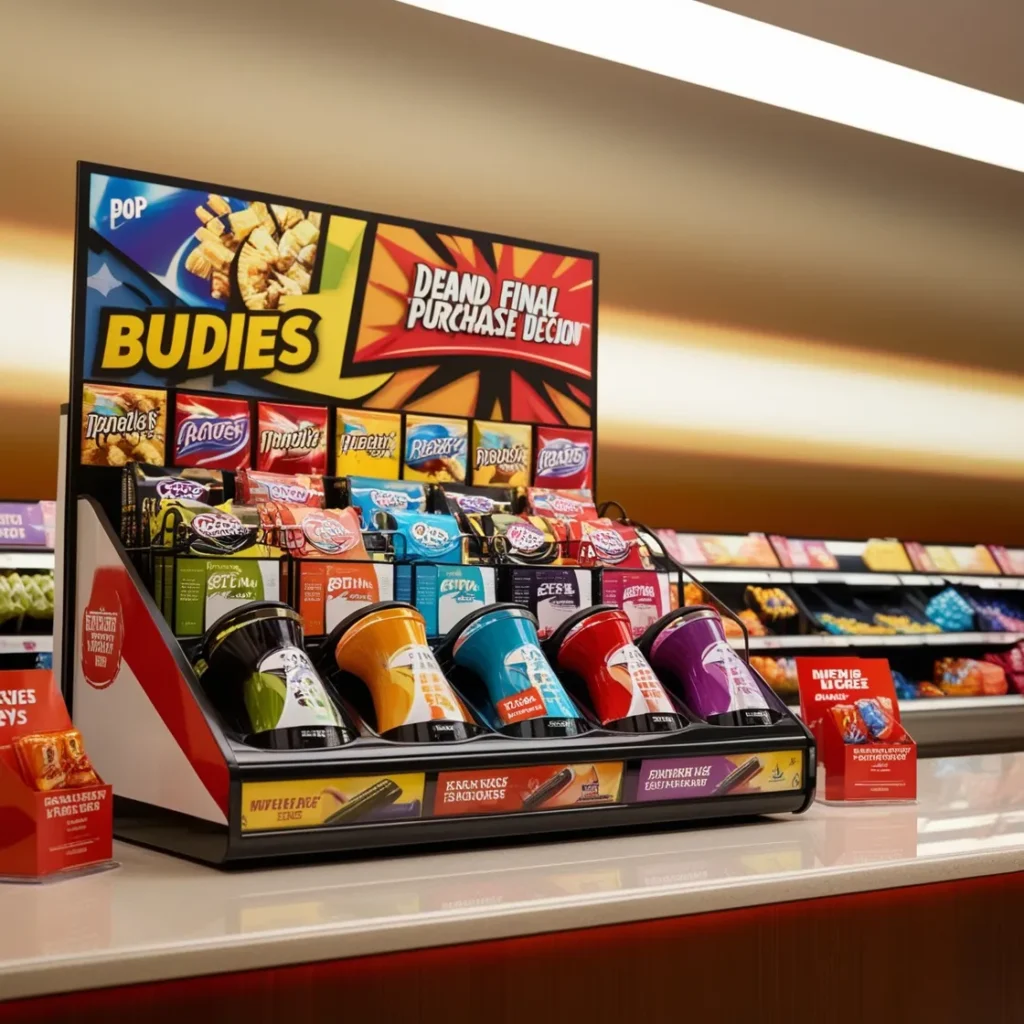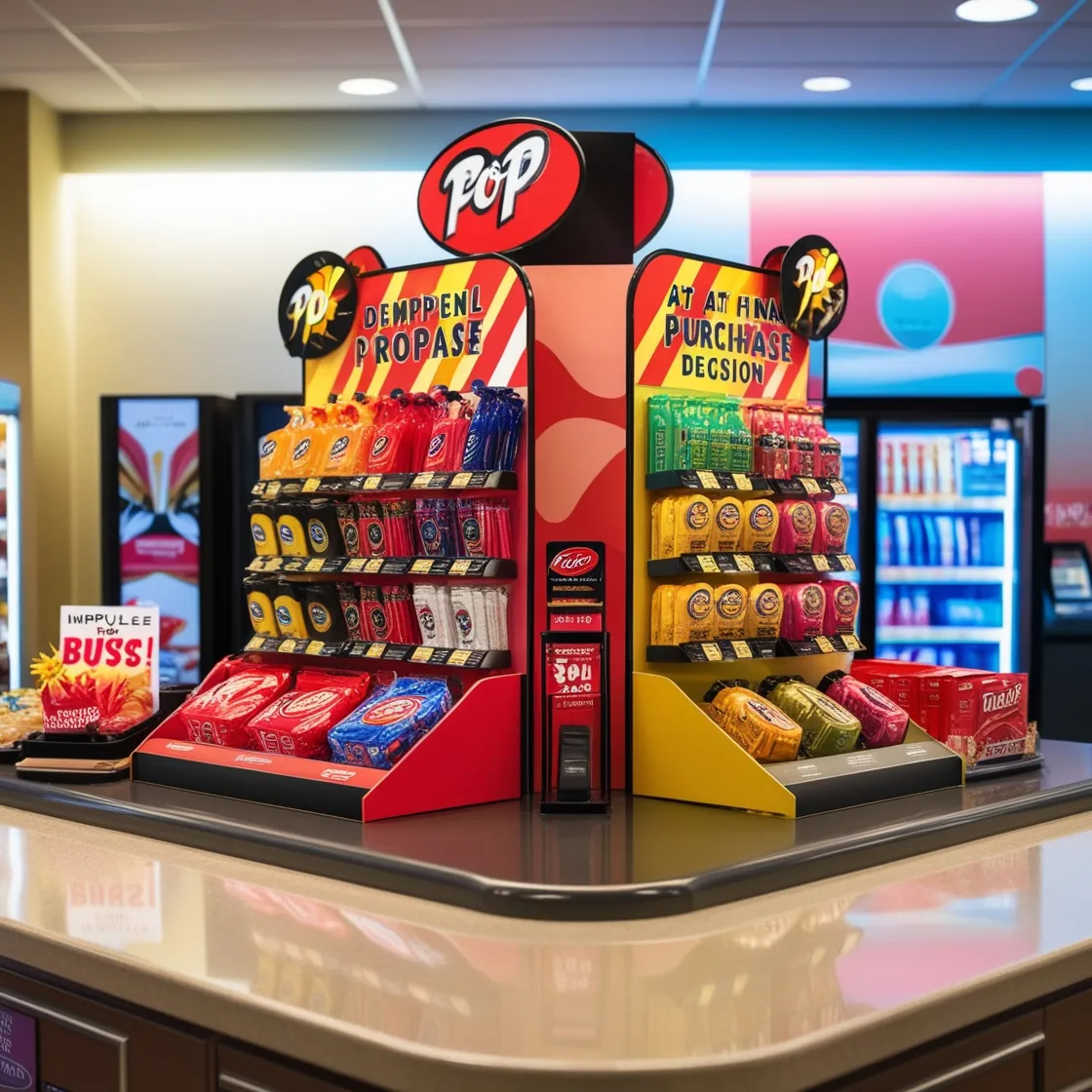In the retail industry, increasing sales through impulse purchases is a key factor in driving profitability. Point-of-Purchase (POP) displays have long been recognized as one of the most effective tools for encouraging customers to make spontaneous purchases. This article explores how well-executed POP displays can significantly boost conversion rates, examining the psychology behind impulse purchases, the strategic use of display placement, and the integration of modern design elements. Retailers that leverage these techniques can create a more engaging shopping experience and drive substantial sales growth.


Introduction: Understanding the Role of POP Displays in Retail
Impulse purchases are a vital part of in-store sales, contributing a significant percentage to overall revenue. These unplanned buys, made in the spur of the moment, can often be triggered by carefully designed POP displays. Point-of-Purchase displays strategically placed throughout the store can have a profound impact on a customer’s decision-making process, encouraging them to purchase items they had not originally planned on.
What Are POP Displays?
POP displays are marketing tools that retailers use to promote products at or near the point of purchase. These displays are designed to catch the customer’s eye, typically placed in high-traffic areas such as near the checkout counter, at the end of aisles, or in strategic sections of the store. The key function of POP displays is to stimulate impulse buying by showcasing products that customers may not have initially intended to purchase.
Why POP Displays are Crucial for Increasing Conversion Rates
The Psychology Behind Impulse Purchases
Understanding the psychology of impulse buying is essential when designing POP displays. The decision to purchase a product on impulse is influenced by several emotional and psychological triggers that retailers can leverage.
Visual Stimulation
One of the most effective ways to grab a customer’s attention is through striking visuals. Bold colors, captivating designs, and dynamic arrangements can make POP displays impossible to ignore. When a display catches the eye, it has the potential to draw customers in and encourage spontaneous purchasing decisions.
Urgency and Scarcity
The fear of missing out (FOMO) is a powerful motivator. Many POP displays are designed to evoke a sense of urgency by promoting limited-time offers, “while supplies last” messages, or seasonal discounts. This sense of scarcity compels customers to act quickly before the opportunity disappears.
Simplicity and Convenience
Simplicity is another critical factor in the effectiveness of POP displays. Overly complex displays can confuse customers, while well-organized, easy-to-understand displays encourage quick decision-making. Offering products with clear benefits and easy-to-read messaging allows customers to make snap purchasing decisions.


Designing POP Displays That Drive Sales
The effectiveness of a POP display hinges on its design. Retailers need to carefully consider several elements to ensure their POP displays not only attract attention but also encourage action.
1. Strategic Placement of POP Displays
The placement of POP displays is crucial to their success. Retailers must position displays in high-traffic areas where customers are most likely to notice them. However, placement isn’t just about visibility; it’s about timing.
High-Traffic Zones
Placing POP displays in areas with heavy foot traffic, such as at the entrance, along major aisles, or near checkout counters, increases the chances of customers interacting with them. These locations ensure that customers encounter the displays just as they are in the process of finalizing their shopping decisions.
Product Pairing
Another strategy is placing POP displays next to complementary products. For example, a display for a phone case placed near a display of smartphones creates an opportunity for customers to purchase both items together, increasing the likelihood of additional purchases.
2. Using Design Elements to Maximize Impact
The design of POP displays should not only be visually appealing but also strategically crafted to enhance the product’s appeal. Consider incorporating the following design elements:
Bright Colors and Contrasting Fonts
Bright, eye-catching colors are key in making POP displays stand out. Using contrasting fonts and large, readable text can help highlight important messages like “Limited Time Offer” or “30% Off.” The design should make these elements easy to spot from a distance.
Clear, Concise Messaging
When it comes to POP displays, simplicity rules. The message should be short, clear, and impactful. A customer should be able to understand what is being offered in a matter of seconds.
Maximizing Product Visibility
For POP displays to succeed, the product should take center stage. Any design elements used should enhance, not overshadow, the product. By focusing on the product’s features and benefits, retailers can make sure the display is not only attractive but also effective at encouraging a purchase.


Leveraging Technology in POP Displays for Maximum Impact
As retail continues to evolve, POP displays are embracing digital innovations that enhance customer interaction and engagement. Digital signage and interactive elements are increasingly being integrated into traditional POP displays to create a more dynamic and engaging shopping experience.
Interactive Digital Signage in POP Displays
One of the most effective ways to elevate POP displays is by incorporating digital signage. These displays can feature video content, dynamic product information, or promotions, which can engage customers more effectively than traditional static displays. The ability to update content in real-time ensures that POP displays remain fresh and relevant throughout the sales period.
QR Codes and Augmented Reality
Including QR codes on POP displays is a simple yet powerful way to provide customers with additional information about a product or promotion. Through scanning, customers can gain access to discounts, product reviews, or even special loyalty rewards. Augmented reality (AR) is another cutting-edge technology that can be used in POP displays to enhance the shopping experience, allowing customers to interact with products virtually before making a purchase decision.
Types of POP Displays That Drive Impulse Purchases
There are several types of POP displays, each serving a specific purpose in retail environments. By selecting the right type of display for a given product, retailers can maximize their chances of driving impulse purchases.
1. Counter Displays
Counter displays are ideal for smaller products that can be showcased near the point of checkout. These POP displays often feature impulse-buy items such as snacks, beverages, or beauty products. Since they are placed in close proximity to the final purchasing decision, they are particularly effective at driving last-minute buys.
2. Floor Displays
Floor displays are larger, freestanding displays placed in high-traffic areas. These POP displays can hold multiple products and are perfect for seasonal promotions or high-margin products. Their larger size ensures they stand out and capture the attention of shoppers from a distance.
3. Shelf Displays
Shelf displays are typically placed on retail shelves and are ideal for items that are part of a larger product range. By drawing attention to a specific product variation or new release, shelf displays encourage customers to explore more of the product line.
4. End Cap Displays
End caps are positioned at the ends of aisles and are some of the most coveted locations in retail stores. POP displays placed here can showcase seasonal products, limited-time offers, or impulse buys, enticing customers to make a purchase before they move on to the next section of the store.
Best Practices for Creating High-Converting POP Displays
1. Tailor POP Displays to Your Target Audience
Every retail environment has its own unique customer base. Understanding the demographics and shopping behaviors of your target audience allows you to design POP displays that are more likely to resonate with customers. Whether it’s through the use of digital elements or traditional designs, tailoring your display to meet the preferences of your target market will increase its effectiveness.
2. Use Time-Sensitive Promotions
Limited-time promotions create a sense of urgency that can spur customers to act quickly. Seasonal discounts, flash sales, and countdown timers are effective tactics that can be incorporated into POP displays to create urgency and increase impulse purchases.
3. Experiment with Product Bundling
Bundling products in POP displays encourages customers to purchase multiple items at once. Offering a discount for bundled purchases can create additional perceived value, leading to higher sales volume.
4. Maintain Brand Consistency
Consistency is key in building trust with customers. Ensure that your POP displays align with your brand’s overall aesthetic and messaging. When displays reflect the same visual identity and tone as the rest of the store, they build a cohesive brand experience that encourages customer loyalty.
Conclusion
POP displays are a powerful tool for driving impulse purchases and increasing conversion rates in retail environments. By strategically designing, placing, and updating these displays, retailers can create an engaging and effective shopping experience that encourages customers to make unplanned purchases. Leveraging modern technology such as digital signage, QR codes, and augmented reality further enhances the effectiveness of POP displays. When executed thoughtfully, POP displays can be a game changer for increasing sales and driving long-term profitability.
FAQs
1. How can I make my POP display stand out in a crowded retail environment?
Focus on eye-catching design, bright colors, and clear messaging to ensure your POP display grabs attention.
2. What is the best location for a POP display?
Strategic placements include high-traffic areas such as entrances, near checkout counters, or at the end of aisles.
3. Can digital signage be used in POP displays?
Yes, digital signage adds an interactive element to POP displays, providing dynamic content and real-time updates.
4. How often should POP displays be updated?
To remain effective, POP displays should be updated regularly to reflect new promotions or product offerings.
5. Are interactive elements important for POP displays?
Interactive elements, such as QR codes or AR features, enhance customer engagement and provide more information, making the display more effective.
Enhance your retail presence with eco-friendly, custom-designed cardboard display stands and packaging boxes. Perfect for retail stores, trade shows, and branding, our solutions combine durability and creativity.






